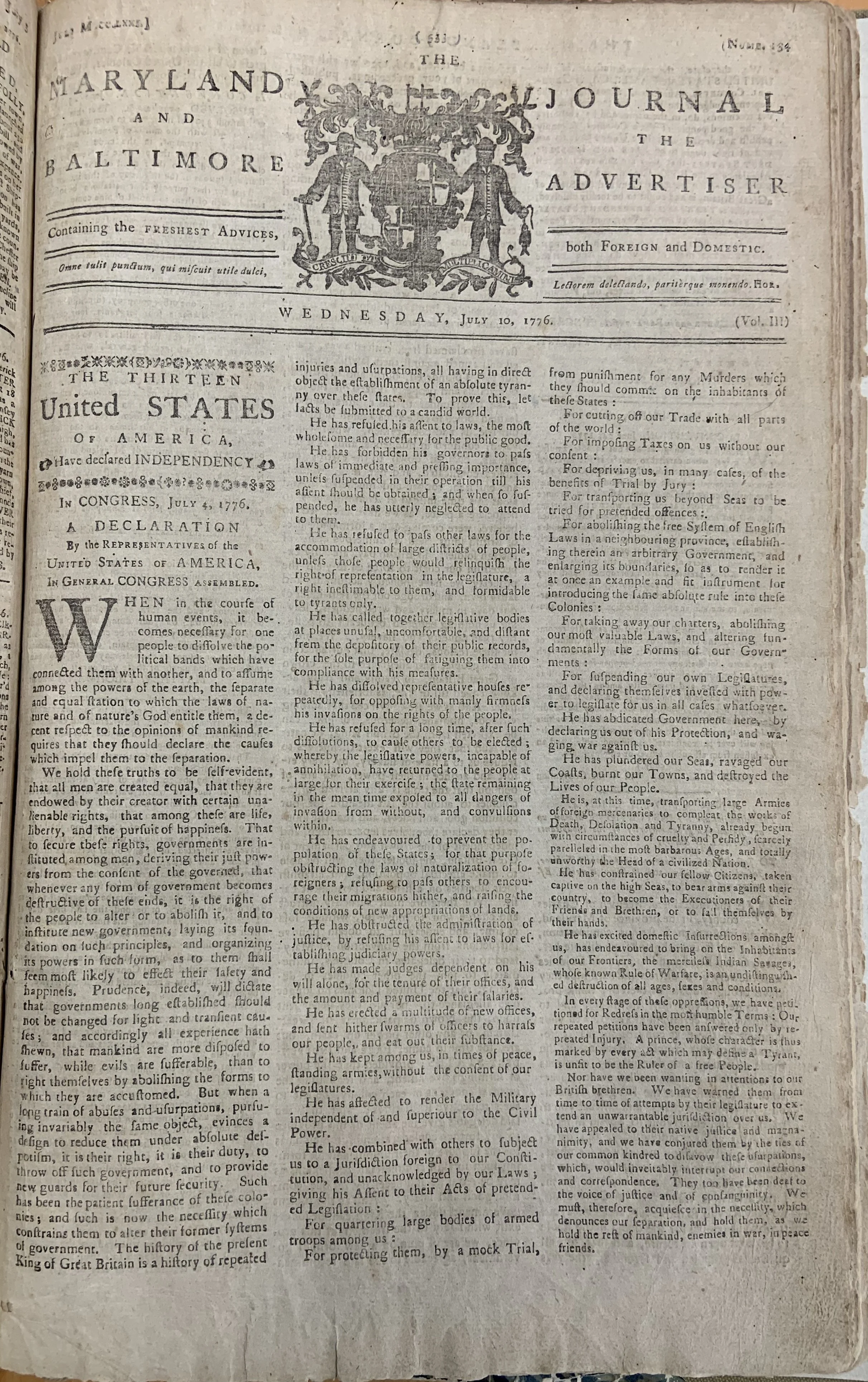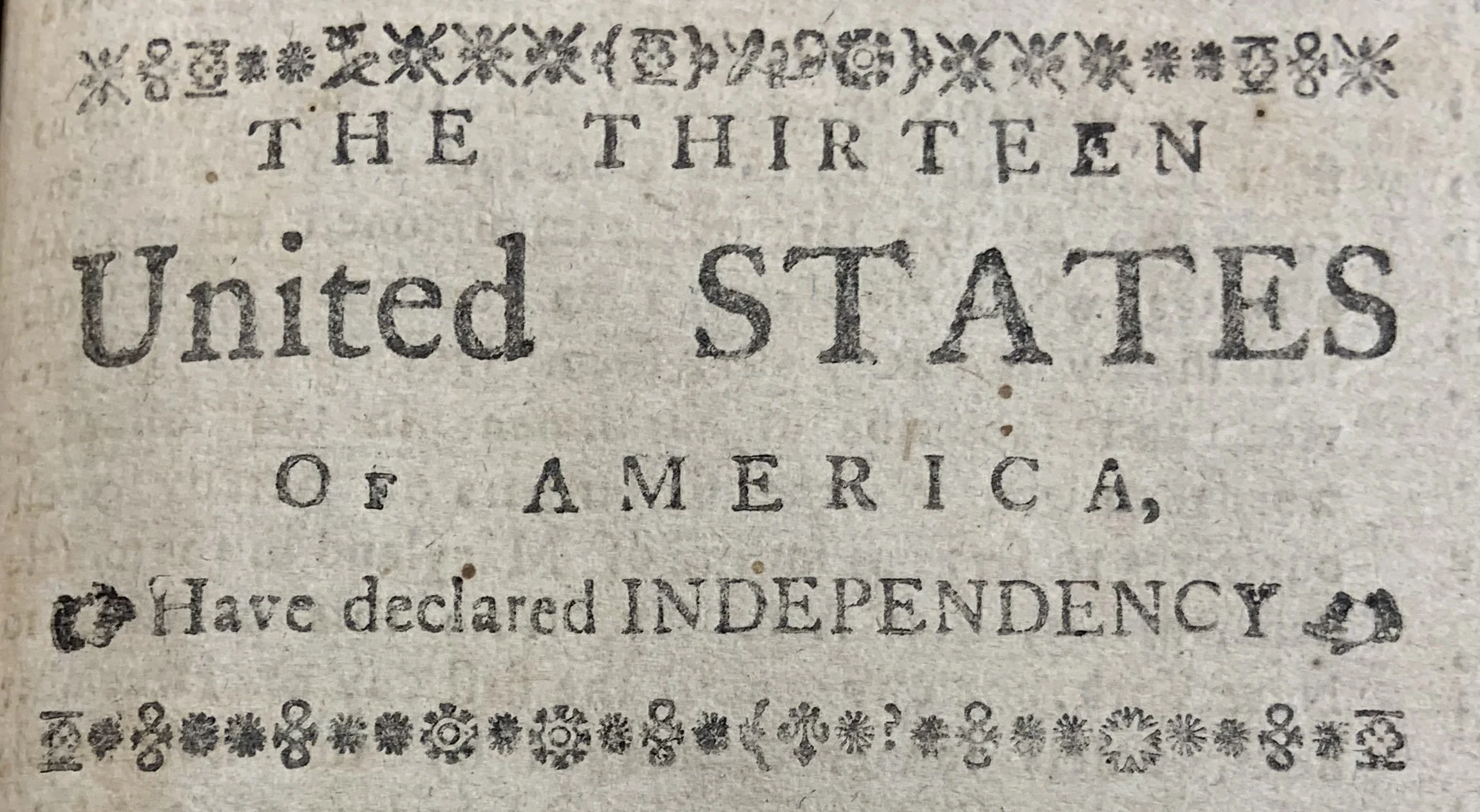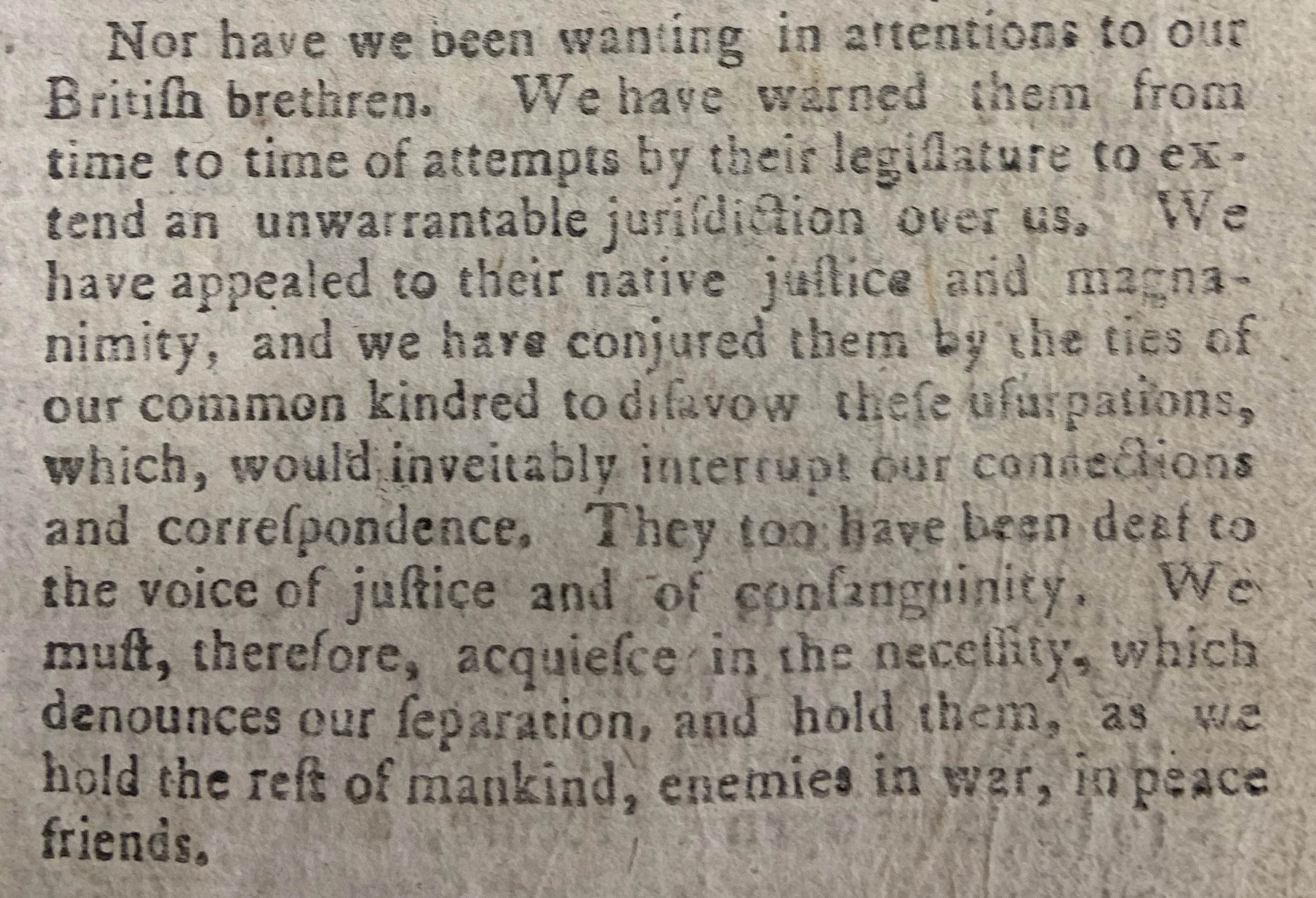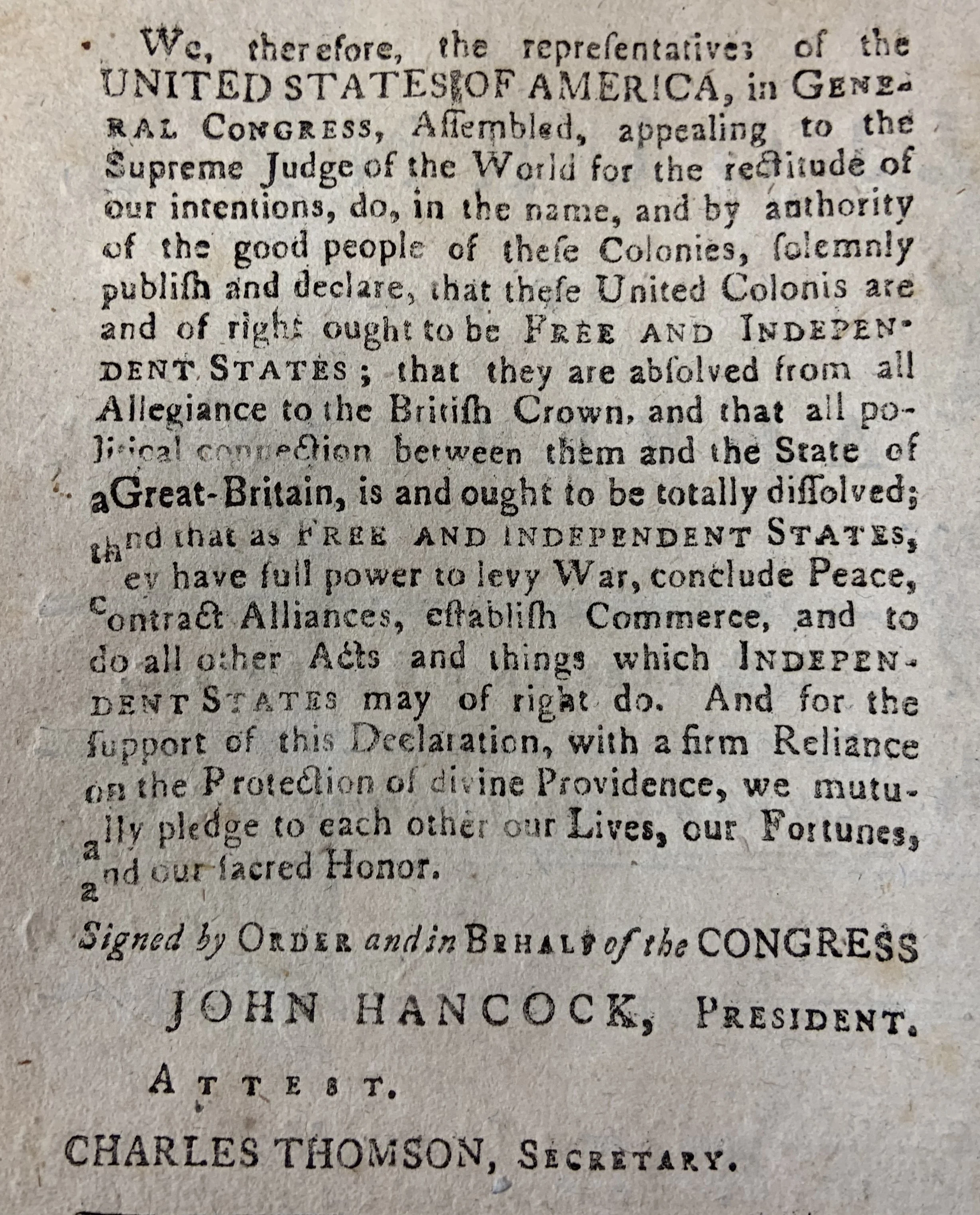No Small Mirth
Mary Katharine Goddard celebrated the Declaration of Independence as only a printer could
As night fell on July 29, 1776, an effigy of King George III was carted through the streets of Baltimore “to the no small Mirth of the numerous Spectators.” That was how the day’s events were described in Mary Katharine Goddard’s Maryland Journal and the Baltimore Advertiser on July 31. At noon, the Declaration of Independence was read aloud at the courthouse, and the people responded with “universal Acclamations for the Prosperity of the Free United STATES.” The excitement continued through the evening, as the effigy of the king was “thrown into a Fire made for that Purpose.” Goddard’s newspaper approved of the scene: “Thus may it fate with all Tyrants.”
This fiery reaction to the Declaration of Independence came weeks after the text was first printed in Baltimore’s newspapers. James Hayes, Jr. printed the Declaration in Dunlap’s Maryland Gazette on July 9, and Goddard did the same in the Maryland Journal on July 10.
Mary Katharine Goddard celebrated the Declaration of Independence as only a printer could. At the top of the first column on the front page of her newspaper, Goddard included this announcement: “THE THIRTEEN United STATES Of AMERICA, Have declared INDEPENDENCY.” The last three words were emphasized by manicules, or hands with pointing index fingers. Printers often used manicules to draw their readers’ attention to advertisements or particularly important pieces of information.
Above and below this announcement of independence, Goddard and her team used other ornamental pieces of type. They created lines made of asterisks, stars, florettes, sparkles, and even a rogue question mark. Each of these ornaments mean something individually, but when set in a straight line, they form an eccentric pattern. This was a fairly common practice for separating text in Goddard’s newspaper. In fact, one of these ornamental lines was re-used in its entirety in the following week’s issue.
The primary purpose of the Declaration of Independence was to announce that the thirteen United States of America were independent. Mary Katharine Goddard put the cart before the horse by placing the ornamental announcement of independence before the Declaration itself. This suggests that she was not only sharing the news, but relishing it.
Prioritizing this announcement impacted the Declaration, in more ways than Goddard perhaps realized. First, the entire Declaration could not fit on the front page of the Maryland Journal. Toward the end of the list of grievances against King George III, Goddard’s typesetter tried switching to a smaller size type. In this effort to squeeze as much of the Declaration in as possible, the typesetter skipped a sentence. The final paragraph that was able to fit on the front page is missing this statement about the British people: “We have reminded them of the circumstances of our emigration and settlement here.” There is no evidence that this was an intentional change. It was far more likely the mistake of someone who lost track in the middle of a series of sentences, each beginning with “We.” And it would have been hard for readers to notice, unless they checked Dunlap’s Maryland Gazette.
The rest of the Declaration of Independence was relegated to the second page. The final paragraph of the Declaration made the point that Goddard summarized at the top of the front page. Here, the type slipped during the printing process. The first and second letters of a few lines moved slightly above or below where they should be.
These typesetting choices and mistakes make the Maryland Journal unique among other newspaper printings of the Declaration. But there is another reason why the Maryland Journal is remarkable that has less to do with what was on the front page and more to do with what was on the back page.
The July 10 issue of the Maryland Journal was the only newspaper printing of the Declaration of Independence in the United States published by a woman under her name. Surely, many other women assisted in other newspaper printings—the wives, mothers, sisters, and daughters of printers. But Mary Katharine Goddard had taken over her brother William’s newspaper, and she made it known that the Maryland Journal was published by M.K. Goddard. She was committed to “Care, Fidelity, and Expedition” in her printing work. This issue is not necessarily the best example of her work, but it still represents her distinct perspective.
Where to See It in Person: American Antiquarian Society






